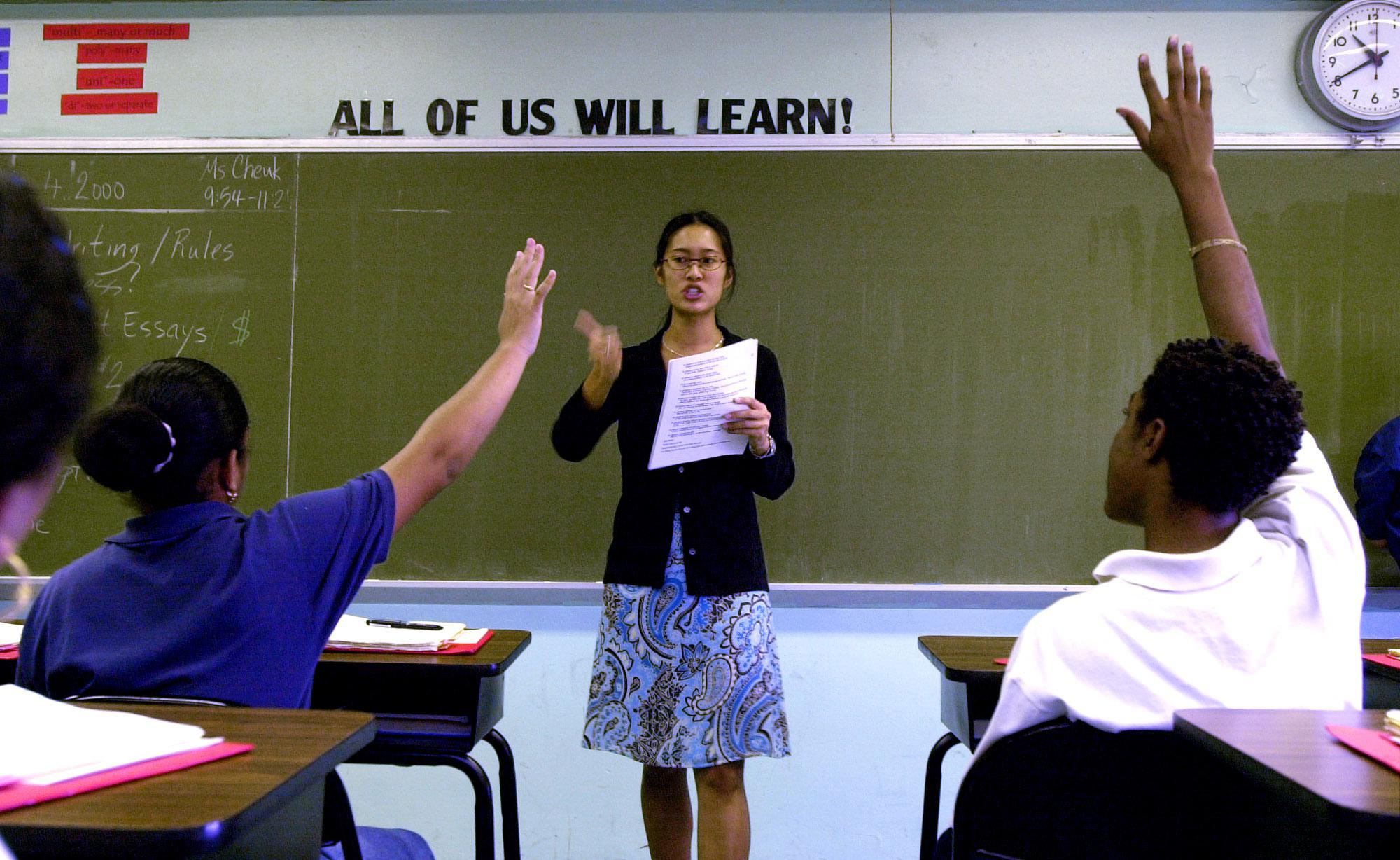
Although schools from places like KIPP have worked to ensure that all students will learn, the … [+]
As members of the media have bemoaned the tragic results of students on the latest National Assessment of Educational Progress (NAEP)—also known as the nation’s report card—many have been all-too-willing to jump into the game of who is responsible, but few have sought innovative solutions to change the fundamental underlying reality: today’s schools were not built to maximize each and every student’s learning.
Just weeks earlier, a new report titled “Out of the Box,” along with an accompanying afternoon of virtual programming, sought to introduce a way to change that reality through the use of “innovative model providers” to shift us away from the current paradigm of schooling and “support school communities in actualizing the visions they set forth.”
The solutions generally offered in the media to the challenges students face have revolved around things like tutoring, summer school, longer school hours and more days. Although there’s nothing wrong—and some things right—with those solutions, what none of them do is upend the fact that today’s schools were not designed to optimize learning. Their time-based nature means that they were in fact built to embed failure for the majority.
Even worse, some of these ideas share the assumption that all students should just have more of the same type of schooling experience they’ve always had—a schooling experience that wasn’t doing what today’s society needs it to do prior to the pandemic either because of the way it was designed. Put differently, the schools we have do exactly what they were built to do—which is at odds with the society we inhabit today.
What if instead of layering tutoring on top of today’s schools, we instead took the principles of effective, high-dosage tutoring and embedded those in schools themselves?
Or, as the Out of the Box report says, “Imagine, for example, elementary classes that deeply embed the science of reading, making use of phonics instruction to the degree appropriate for each student and using technology and artificial intelligence to support building the requisite vocabulary and content knowledge to access rigorous text. In middle grade math, imagine sophisticated diagnostic assessments generating a personalized learning plan that adapts daily and allows each student to drive their own progress using a variety of learning modalities. … Science and social studies classes could integrate combinations of text, virtual reality, group discussion, and interdisciplinary projects that extend beyond what an individual teacher could sustainably plan for each day.”
MORE FOR YOU
But the report then points out that, “Just as an engine has little value atop a horse and buggy, truly realizing new possibilities requires fundamentally reimagining elements of existing paradigms in order to transition to something new and better.”
So how do we do that?
Readers of my new book, From Reopen to Reinvent, know that I’ve pushed the importance of autonomy: arming a separate group of educators with the ability to rethink completely how school works.
The authors of “Out of the Box”—Joel Rose, Jenee Henry Wood and Jeff Wetzler—agree, but go even farther in specifying what this likely means.
According to them, “The K-12 sector is not built to organically enable this type of paradigm shift. School operators generally do not have the design capacity to alone fundamentally reimagine learning particularly if that involves sophisticated uses of technology. Nor do individual teachers, who simply cannot be expected to design the classroom of tomorrow while also managing the classroom of today.”
This echoes my book, in that it argues that if there isn’t at least one person whose full-time job is to innovate, then it’s no one’s job. That’s because the day-to-day priorities of the organization will drain energy away from any efforts to create something new and different. In other words, the urgent and immediate tasks in front of someone—even if they aren’t important in the long run—will almost always drown out the important but less urgent work of long-term transformation.
Few sectors ask its practitioners on the ground to design next-gen breakthroughs. It wasn’t the doctors, for example, who created COVID vaccines, nor the railroad operators that gave us airplanes. Some of these people may be on the teams that design the new innovations, but it’s not expected that they do this as part of their day-to-day work.
This requires a new research and development effort around the creation of innovative model providers that design new learning models for different subjects and grade spans by drawing on the talents of educators, technologists, researchers, and the like.
The learning models they create, “Out of the Box” argues, won’t just include a new curriculum. They should include instructional design, of which content and assessment are a part; an aligned set of pedagogical practices; an operational design that reimagines how teachers do their work, the use of time, and a physical classroom design; and a technological design that embeds the use of tools to execute the model.
Such an effort would be new because it would bring a focus that is missing to the country’s educational research and development efforts, but also because it would ask the country to commit to spending far more on research and development than it does today.
And by schools looking for solutions to specific problems from innovative model providers—organizations like New Classrooms, Valor Collegiate, Gradient Learning and EL Education—they would stimulate more demand for research and development.
Schools that seek out these innovative models will also be turning to autonomous entities that have had the freedom to rethink schooling—its purpose, its underlying experiences and use of time, and its systemic implications—to transform schooling and unleash student potential.
That would, at long last, not just deal with the tragedy of the present, but transform schools to deal with the deeper travesty: that our schools, designed long ago for a different age, weren’t built to optimize learning or serve anyone particularly well.







